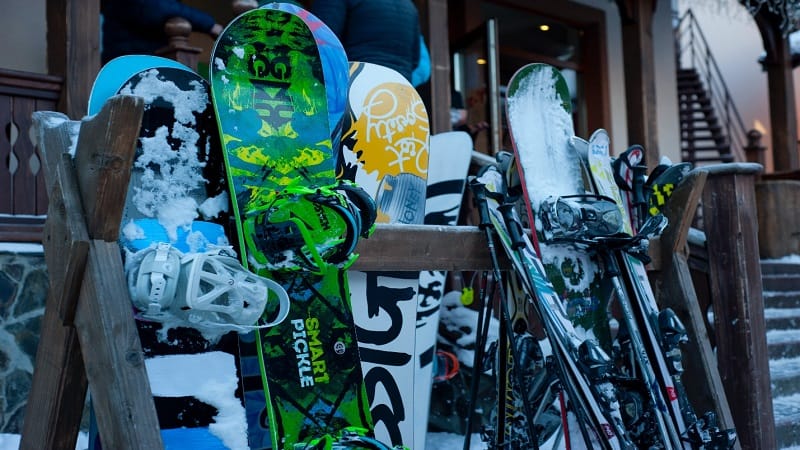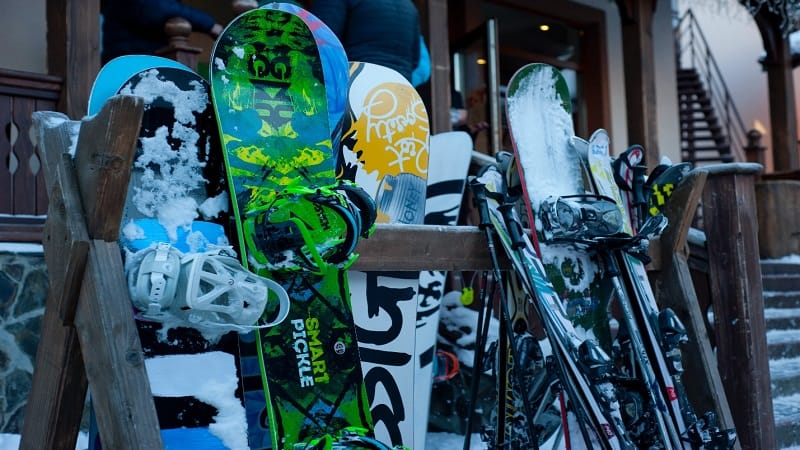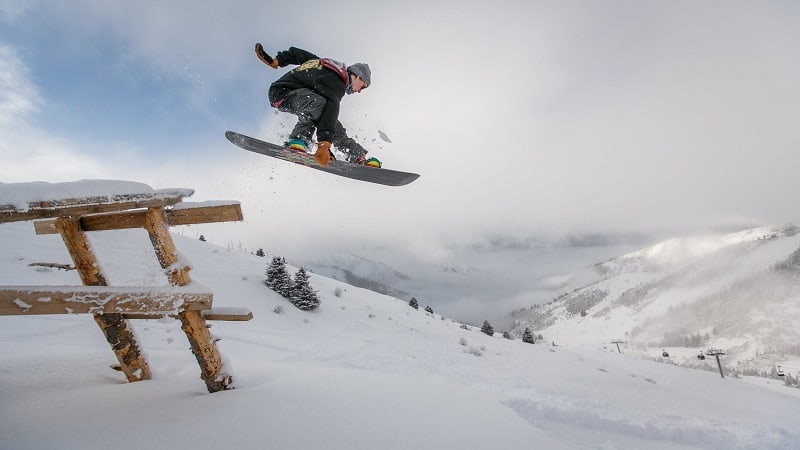We’ve all been there when we struggle to decide which snowboard to purchase. But, it is important to understand that the right size of a snowboard can help prevent you from experiencing an accident. But, to get the right size, you need to know how to measure a snowboard.
Snowboard measurements can vary based on how you go about calculating them. But what they all enable you to do is find your perfect size of snowboard. Consider the scenario where you go for a snowboard too small for you; it can cause you to lose control of your snowboarding at higher speeds. This could result in a possible accident or heavy injury, and we wouldn’t want to risk that now. So before you go on the slopes, take a moment to read what areas you’ll need to focus on measuring a snowboard.
How to Measure a Snowboard in 4 Steps
Here are four areas that you need to focus on while measuring your snowboard.
- Height
- Weight of the snowboard and yourself
- Width
- Your Ability Level of Snowboarding
So let’s begin with the first step of the tutorial on how to measure a snowboard.
Step 1: Height Measurement
Height is usually the first aspect of measurement that you may think of. The general thumb rule that people usually follow is to allocate smaller-sized snowboards for their children and bigger-sized snowboards for themselves. That is one generic way of measuring a snowboard by sight, but it is far from accurate.
You see, height can be measured in several ways, but here are the two most common and major ways people like to measure their snowboards.
First Way
This is the traditional method people use to have the snowboard stand on its tail in front of you. The snowboard’s tip should be between your nose and chin on average. However, for smaller boards, it should be between your chest and chin. Small boards are used if you are a beginner or an intermediate. If you go for a larger snowboard, it should be between your forehead and your nose.
Second Way
This is a recent method that has emerged which is known to provide an accurate measurement. It includes using a snowboard size calculator. Usually, a snowboard’s height is a minimum of 85% of your height. But here is a formula that can help you understand how to measure the size of a snowboard.
Your Height (inches) x 2.54 x 0.88 = Your Snowboard’s Height.
For example, if your height is 70 inches then your snowboard’s height should be
70 x 2.54 x 0.88 = 156.5
We’d recommend you to use a mixture of both ways so that you can get the best measurement of a snowboard. A size chart for snowboard heights can be a great way if you are afraid of doing the math.
Step 2: Weight Measurement of the Snowboard and Yourself
Solely relying on height is never a good idea because your weight is equally important in measuring a snowboard. A snowboard that matches your weight will enable you to have a smoother riding experience. If your weight is heavier than the snowboard, it can face difficulty controlling the snowboard’s speed. Whereas, if your snowboard is heavier than you, you will find it harder maneuvering the deck.
So for measuring the weight of the snowboard and yourself, we’d recommend looking at a size chart. But, ensure that you also look at the featured outlined by the manufacturer for the deck.
Step 3: Snowboard’s Width Measurement
A snowboard’s width is as important of a component as the height and weight. But, unfortunately, it is one of the aspects that often gets overlooked by riders. A board’s width is measured by focusing on the most narrow point, the board’s center. This width should correspond with the size of your snowboard boots.
Suppose if your snowboard’s width is lesser than the space taken by your snowboard boots, there are high chances of you experiencing an accident or slipping down on the slopes, not to mention a heel or toe drag. On the other hand, if your snowboard’s width exceeds the size of your snowboard boots, it would become harder for you to control the movement of your snowboard.
The right size of a snowboard’s width should be such that your heel and toe match both edges. Even though companies do not publish the width charts for snowboard, we have found you one over here.
Step 4: Know Your Ability Level of Snowboarding
This might come across as new. You might probably be skeptical about how your riding ability plays a role in measuring a snowboard. Well, guess what? Your snowboarding abilities can tell a lot during the measurement. Ability levels are usually divided into three categories.
Beginner Level
You should be abiding by accurate size charts and not going for vague options based on just looking at a snowboard as a beginner.
For beginners, we’d recommend a soft board because it is easier to control movements and speed. Not only that but for the measurement of a snowboard, go for one that is towards the lower end of a snowboard’s size range.
Intermediate
So you have been snowboarding for a couple of years, so you might want to go for a slightly different board, such as an all-mountain or freestyle type of board. But, be sure to stick to the middle of the snowboard’s size range.
Advanced
You have years’ worth of experience under your belt and can slide down a slope like a pro. So for you, there is no such guide for sticking to a size range for the snowboard. You can choose which end of the size range you want to stick at based on the type of riding experience you want to go for.
Our Final Thoughts
By now, you should be quite familiar with how to measure a snowboard and the importance of each component to your riding experience. The right measurements can elevate your experience of riding the slopes and save you from a possible accident. So go nail those slopes!
Happy Snowboarding!

















